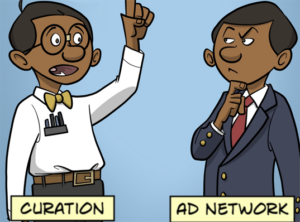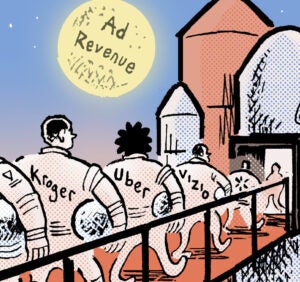 “Data-Driven Thinking” is written by members of the media community and contains fresh ideas on the digital revolution in media.
“Data-Driven Thinking” is written by members of the media community and contains fresh ideas on the digital revolution in media.
Today’s column is written by Jonathan Lenaghan, head of data science at PlaceIQ.
There’s been a lot of talk lately about “precision” and “accuracy” in the world of mobile marketing. But it’s becoming clear that the pressure to pinpoint high-quality mobile location data is blurring the line between what is good and bad, and realistic and unrealistic.
Here is a little context to help set the record straight.
While it’s true that the degree of precision determines the speed and relevance of mobile ad delivery, in some cases, bigger is not necessarily better. And when it comes to hyperlocal, smaller is not necessarily better, either. This means that some location points, which may sound hyperlocal in theory, can actually mislead or confuse mobile marketing clients.
Latitude And Longitude
Consider the digits or decimals to which location signals are gathered. It works like this:
Latitude and longitude (lat/long) figures represent the point on a map where a location sensor is picked up. The decimal places of that lat/long figure indicate the size of the fence surrounding that data point. Two decimals equate to a 1.1 km x 1.1 km fence, or roughly two-thirds of a mile. Three decimals equate to a 100 m x 100 m tile, which is roughly the size of a city block. Four decimals zoom in to 10 meters, which is where the line is drawn between good and bad data.
While a location data company is capable of capturing five, nine or even 12 digits, that doesn’t mean it should. Five decimals hone in on a 1 m x 1 m meter space, at 8 decimals (1 mm x 1 mm) you’re looking at an ant, and when you reach 12, it’s plain ugly. Twelve decimals gets you accuracy somewhere between a micrometer and a nanometer, which has no applicability in mobile advertising. It is (almost literally) splitting hairs.
Don’t aim for these hyperlocal levels of accuracy. They are not only ludicrous from a location technology point of view, they are also computationally infeasible to execute given the latency requirements found in today’s real-time bidding environments, not to mention the lack of consumer willingness to wait for application or page loads on their mobile devices.
Think about the time it takes the GPS on your smartphone to determine your location or find your destination. If a marketer is trying to determine the location of a smartphone on the move,which has a GPS accuracy of 3 meters at best, then 10 meters or four decimal places in lat/long is as accurate as you can get.
Four decimal places is usually the sweet spot. Precise location signals can be dependably gathered at ad tech speed within 100 m x 100 m, which requires no more than four decimal places. While 100 meters may place a device in a few locations (if the area is dense), applying time of day to the tile greatly improves the precision. And for a majority of less dense areas, 100 meters produces data that is quite unique and accurate.
The Right Strategy
When trying to determine whether the money you put into a mobile ad campaign is buying good, bad or ugly data, you’ll want to make sure that the strategy being used to gather location data sensors is close enough to target devices in specific stores, rather than a shopping complex or general area.
The strategy should also be designed to accurately determine behavior trends in desired users. Underpinning the strategy should be logic that can be consistently applied across the United States.
Mobile advertising is about using best-case accuracy to serve low-latency, highly relevant marketing messages to targeted audiences. Don’t get lost in the numbers.
Follow PlaceIQ (@PlaceIQ) and AdExchanger (@adexchanger) on Twitter.













